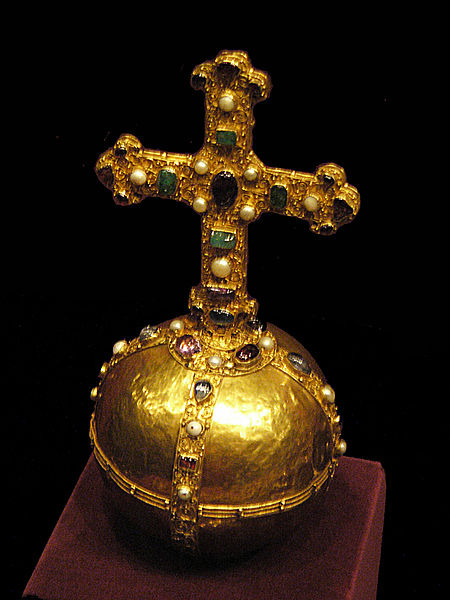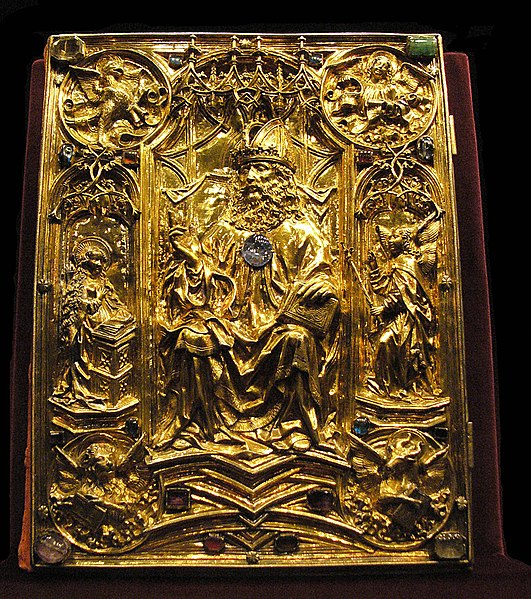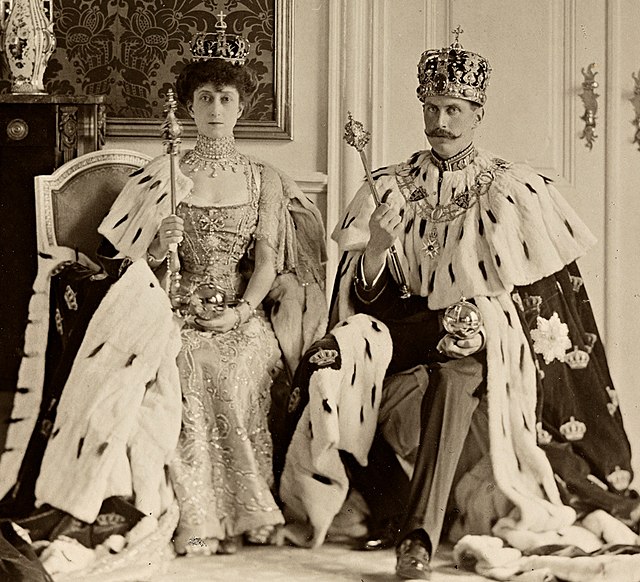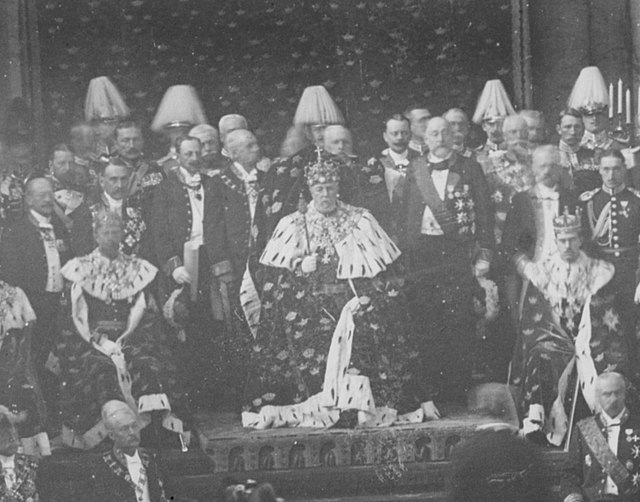The Imperial Regalia, also called Imperial Insignia, are regalia of the Holy Roman Emperor. The most important parts are the Crown, the Imperial orb, the Imperial sceptre, the Holy Lance and the Imperial Sword. Today they are kept at the Imperial Treasury in the Hofburg palace in Vienna, Austria.
Charlemagne, wearing the Imperial Regalia. An imaginary portrait by Albrecht Dürer
Imperial Crown (Reichskrone)
Imperial Orb (Reichsapfel)
Coronation Gospel (Krönungsevangeliar)
Regalia is the set of emblems, symbols, or paraphernalia indicative of royal status, as well as rights, prerogatives and privileges enjoyed by a sovereign, regardless of title. The word originally referred to the elaborate formal dress and accessories of a sovereign, but now it also refers to any type of elaborate formal dress. The word stems from the Latin substantivation of the adjective regalis, "regal", itself from rex, "king". It is sometimes used in the singular, regale.
Queen Elizabeth II with her regalia
King Haakon VII and Queen Maud of Norway with their regalia in 1906
King Oscar II of Sweden, his crown prince Gustaf (V) and grandson Gustaf (VI) Adolf in their crowns and coronets on a state occasion about 1900.
Emperor Pedro II of Brazil wearing elements of the Imperial Regalia. Detail from a 1872 portrait by Pedro Américo.








